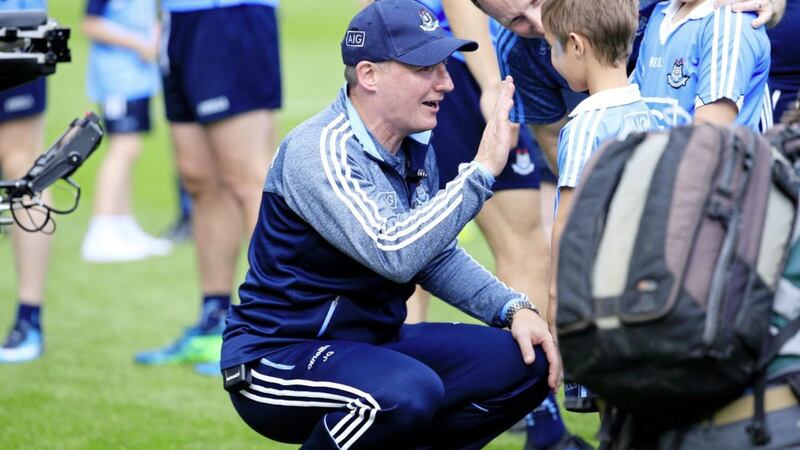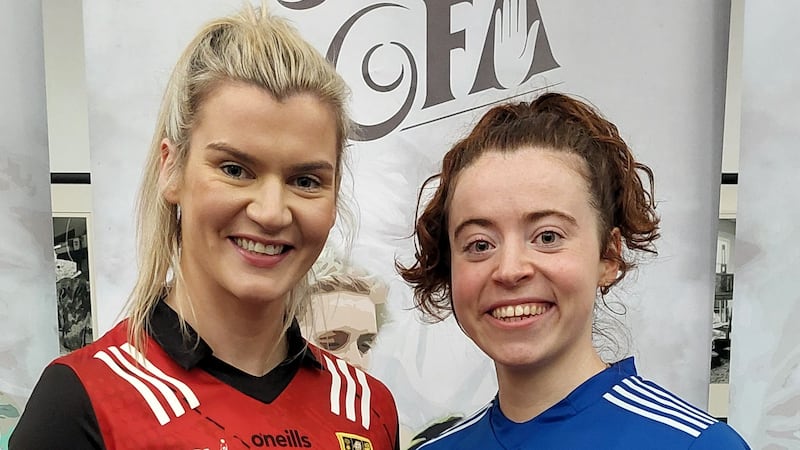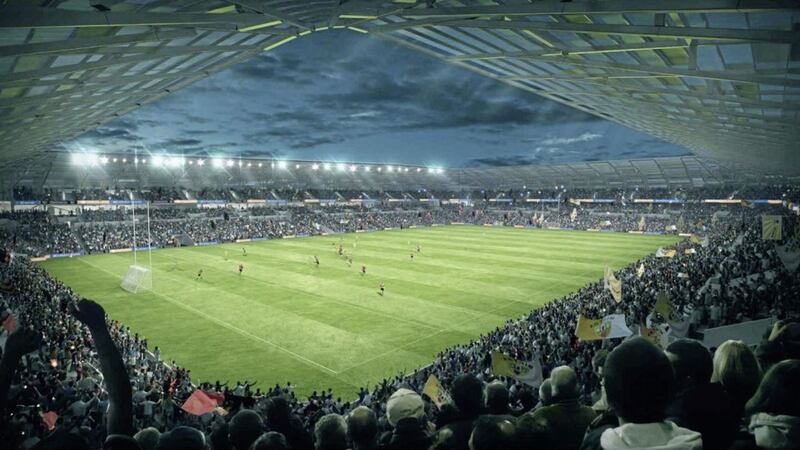PICTURE the scene. It’s the Olympic 200-metre final. Eight competitors.
Rather than have them all on the traditional start line, their positions are staggered.
If you’re pulling such a move, you’d think it’d be done in such a way that levels the field. You take the weakest competitor and put him at the front, and you have Usain Bolt at the back.
Where each person starts would be determined by their average time in the event over two years. That way, they’d all be likely to hit the finish line at exactly the same time.
Imagine the race you’d have then. There’d be no predicting it. As a spectacle, it would be untouchable.
What you certainly wouldn’t do is leave seven men on the start line, and go and lift Bolt’s starting blocks and set them halfway up the track.
And yet to all intents and purposes, that’s what the GAA are doing with Dublin.
The results cannot be a surprise.
Over the course of a decade it has crushed the spirit of not just Leinster, but the country as a whole. Players, fans, coaches, everyone is deflated.
There are only a couple of counties in Ireland that can boast any form of competitiveness against them.
Imagine how this year’s All-Ireland football championship would look if they weren’t in it. Who’d win it? You could throw a blanket over Kerry, Mayo, Galway, Tyrone and Donegal. And yet look at how susceptible each of them are.
It’s the 200 metres minus Bolt.
As demoralising as it has all become, what’s become really infuriating is the steadfast refusal of officialdom to admit that the money being poured into Dublin is in any way responsible for this.
There is an absolute lack of deniability about their dominance not just of their province, but of the country in general.
Yet the GAA and Dublin continue to deny it. Headed by the GAA’s president, the latest tactic for brushing off conversation about levelling the playing field has been to insult the intelligence of the entire rest of the GAA population.
Jim Gavin came out after Sunday’s game and started talking about how the work by coaches on the ground was why Dublin are so successful.
That played into a growing narrative from within the county that the reason they’re going for five All-Irelands in a row is because of the “bloody hard work”, to quote Gavin, of their ground level foot-soldiers in clubs around the county.
It’s enraging.
What have the volunteers in rest of Ireland been doing for the last 130 years?
To insinuate that Dublin are where they are because they’ve worked harder moves their denial on to a new plain.
In the last 11 years, they’ve received just shy of €18m in coaching and games development money from Croke Park.
Cork are next on the list with €1.4m in the same period of time, despite the Rebel county having a bigger number of GAA clubs.
People often say money doesn’t kick the ball over the bar.
It does.
Money = more coaches.
More coaches = more time spent coaching.
More time spent coaching = player improvement.
When you break that equation across the club scene, it’s that availability of coaching that drives the standard. The more of it, the better players get at kicking the ball over the bar.
Dublin county board, as per John Costello at the weekend, has 54 Games Promotion Officers. That doesn’t include coaches that are self-funded by the clubs, who each by-and-large have at least one full-time coach.
The county spent £3.6m last year on coaching and games development, a third of which (€1.2m) was contributed by Croke Park.
That alone accounts for significantly more than the overall budget that most counties have to run all their affairs. Yet Dublin also spent more than €1.5m on their county teams, not to mention the rest of their expenditure.
Compare that their All-Ireland final opponents from last year.
No club in Tyrone has their own full-time coach. The county has a total of five football coaches to cater for all their football-mad schools.
Two of them are part-funded by the councils in Omagh and Mid Ulster. Two are full-time with the county board, and one is part-time.
Beyond that there is one part-time second level coach and one college student on placement.
For hurling, there are two full-time coaches, one Ulster GAA coach and another placement student.
That’s it.
Their payout from Croke Park for games development last year was €119,000, which paid up most of their £200,000 budget for the area.
That is one-eighteenth of Dublin’s budget.
In Dublin there are 93 clubs and in Tyrone there are 53, yet Dublin received ten times more money for coaching last year.
Cork, who have more than 250 clubs, received €249,000. That’s about a fifth of Dublin’s figure, despite having two-and-a-half times the number of clubs.
When Tyrone county committee unanimously passed a motion last year that the GAA introduce “a transparent formulate for the distribution of monies allocated to each county for Games Development”, it was unerringly shot down by Croke Park.
Their Rules Advisory Committee decreed that it was in conflict with a flimsy rule governing the jurisdiction of Central Council. Tyrone’s motion never saw the light of day at Congress and never will.
Tyrone is a largely rural county that, like most, is almost completely reliant on self-help.
By its economic nature, money is more freely available in Dublin. If there is any part of Ireland where clubs could self-sustain a full-time coach, it is there.
If it’s the case that the GAA don’t want to take the knife to their funding because it would mean job losses, then there’s at least some defence of the decision.
But that can only exist as a reason for a very short term now. It has to be time that Croke Park said to them: ‘We’ll give you a stay of a year to sort your finances out, but after that the funding is being cut.’
Dublin would survive. Some of the clubs are chasing after more and more players that they no means of catering for. There is very little green space to create new facilities, and there’s resistance from existing clubs towards the creation of new ones.
As a percentage, the number of schoolchildren playing GAA in Dublin is still relatively small, especially given their population.
But what is the endgame for attracting more and more and more youngsters? Dublin is already struggling to cope with what it has. It’s already won four All-Irelands in a row. It’s already climbing the hurling ladder.
Is being armed with statistics like a 58 per cent increase in participation rates in football simply something a penetration rate that they can take to the Sports Council in order to get more money? Or what exactly is the endgame here?
If the GAA keeps moving its starting block up the track then no matter what anyone else does, Dublin will never be caught.








